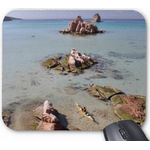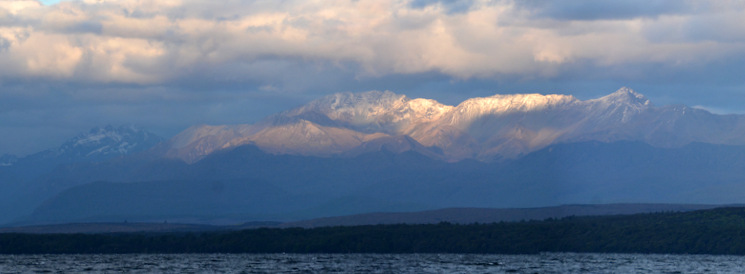•Department of Conservation
Photo album:
•New Zealand
Download GPS file:
• GPS track & waypoints
This section covers the Routeburn track, one of the Great Tracks in New Zealand. It can be done in 2 or 3 days. Some planning ahead is required since the huts and campgrounds fill up soon. In our case, we decided to spend 2 nights in the only track we had planned.
We arranged a transport to pick up our bikes at the Routeburn shelter and bring them to the Divide shelter 2 days later.
Route index:
November 27, 2013: From Sylvan campground to Lake MacKenzie hut (Profile)
November 28, 2013: From Lake MacKenzie hut to Lake Howden hut (Profile)
November 29, 2013: From Lake Howden hut to Divide shelter (Profile)
Route profile:
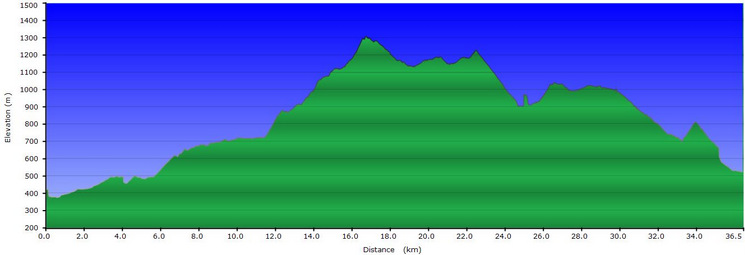
November 27, 2013: From Sylvan camp to Lake MacKenzie hut
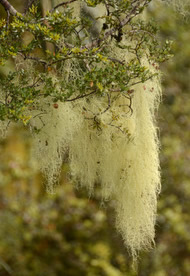
Once at the shelter we start repacking our gear from riding mode to hiking mode. Or we should say tramping mode. By the time we are almost done, our transport shows up. They load the bikes and the duffel bag and we are off to tramp the Routeburn track.
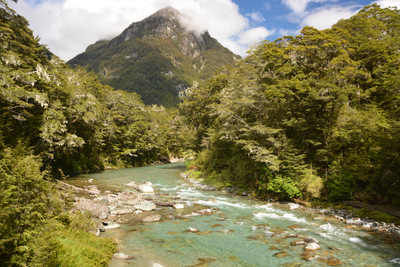
After a few kilometers the forest is still lush but not so humid and it has less moss and ferns. This is where we see a couple of Kakas on the high branches of a beech. According to the hut warden these are rare to spot, so we’ve been lucky. The track goes across a landslide that cleared a good chunk of the mountain side and that allows a fantastic view of the valleys below and the snow-capped peaks. At Km 7.4 is the fork to the Routeburn Flat hut at the bottom of the Routeburn falls, but we go left and keep going since we are not staying there tonight. The track has a steep section here, climbing 160 meters in 0.9 Km.
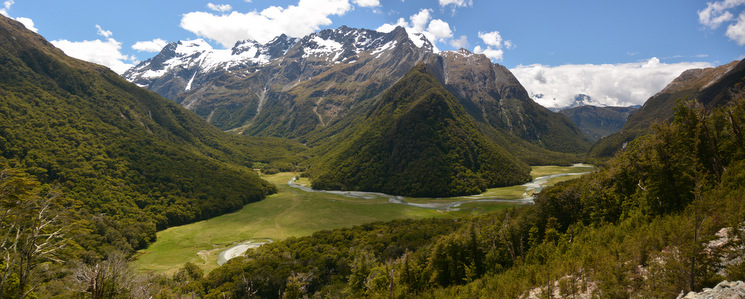
At Km 9.9 we arrive at the Routeburn Falls hut, at the top of the falls. From here, the scenery changes radically. The hut is right at the tree line and above it there are only shrubs and low vegetation. This allows for an expansive view and lakes and rivers are visible from kilometers away. The next section skirts along the side of a flat area where a lazy river meanders after the rushing waterfalls coming down from Lake Harris. The track climbs up to 1300 m., right before the Harris saddle, where the Harris shelter is at Km 13.5.
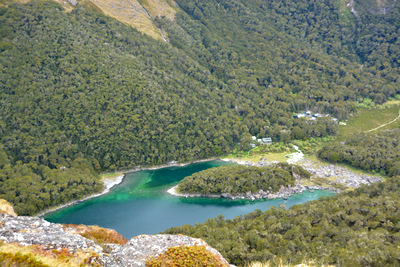
We finally get to the hut after 20.9 Km. We settle and have dinner at the lake shore enjoying the sun. Before the sun sets, the ranger gives a talk about stories of Fiordland. The guy is quite a character and very funny (I mean, without taking the accent into account).
November 28, 2013: From MacKenzie hut to Lake Howden hut
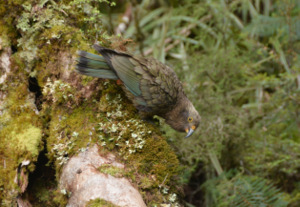
The sky is totally covered by low clouds that block the expansive views we saw yesterday but at least it's not so thick to hide the forest. I can imagine how deceiving must be to hike the entire track in this weather.
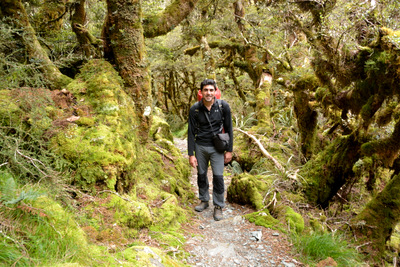

When we arrive at the Howden hut, the stream that drains from the Howden Lake has some sizeable flow. We go over the wooden catwalk and walk up to the covered platform. We wish a nice trip to Javi and Erin and they leave. We take off our rain jackets and shoes and go inside the hut where we start a fire on the cast iron stove to warm up the place. It’s pretty early so we have time for everything including drying our gear, having lunch and chatting with the other few trampers that are staying in the hut tonight. John, the warden, will tell us stories of the hut and park in the evening. The Routeburn track is actually the only Great Track that crosses 2 national parks: the Mount Aspiring and the Fiordland NP.
It keeps raining outside and by now the stream outflowing from the lake is a river twice the width compared to when we got here. Now it flows over the green grass that was the shore before. We also get lightning and thunders, which creates even a cozier atmosphere inside the hut.
November 29, 2013: From Lake Howden hut to Divide shelter
The hike down to the Divide is just 1 hour. It’s 10 AM and still raining. We are supposed to receive our bikes at 1:30 here and ride the 100 Km. to Te Anau. With the combination of the long wait and the rain, we change our minds and take an earlier bus to Te Anau. We’ll pick up our bikes at the bus terminal there. Of course, as soon as we jump in the bus, the rain stops and the sky clears up showing beautiful views around. Why does this always happen?
At the bus terminal, we find out that our bikes are not only scratched in several spots due to the transport but the head sets had been loosened. Ah! And one of the wheels is also flat. On top of it, it’s raining again. We fix all we can and ride to town taking advantage of a dry window.
We settle on a backpacker’s hostel and take the first shower since we started our trip in San Diego!! It feels soooo gooood. We spend the afternoon doing some chores like drying the tent, washing clothes and buying food for the next few days. At the Fresh Choice supermarket we stare for a while at the excellent selection of nuts and snacks. We are reminded that “sampling is theft!” We fill a couple of the provided ziplock bags with hazelnuts and honey cashews and go on for real food. Judit is craving for salad so salad it is for dinner, before our evening activity.
We joined a tour to the Te Anau-au glow worm caves. The boat takes us to the opposite shore of the Te Anau Lake where the caves are. The cave system is much bigger than the section open for visiting. It starts at a lake upstream. The stream draining the lake disappears underground and has carved the limestone into a subterranean river with waterfalls. A set of catwalks take you upstream through the rapids and whirlpools up to a man-made dam where you jump into a small boat pulled buy the guide. At this point lights are not allowed, total obscurity. After a few minutes, our eyes adjust to the darkness and we start moving on. After a few meters, the tiny blue stars begin to appear on the cave ceiling. First, isolated but soon forming constellations of a few stars and then entire galaxies. The concentration of glow worms is large enough to produce a twilight sufficient to see the rocky edges of the walls.
The life cycle of the glow worms is quite interesting. These are actually not worms but larvae living on the ceiling of the cave. They segregate a sticky mucus that hangs from the ceiling a few centimeters. Those filaments (called fishing lines) have drops of a paralyzing substance that prevents the trapped victims to break them and fall down. Their food is flying insects that are attracted by their glow, a chemical reaction in their stomach, similar to the fire flies. When dinner is served, they reel in the sticky line and eat their prey. The larvae stage lasts for about 9 months and then they become a sort of mosquito that doesn’t have a mouth. They need to mate quickly since they only last for a couple of days. Then they lay their eggs and the cycles starts again. Ok, ok, but if I were a flying insect, I would not fly into a dark cave for a couple hundred meters. So, where does their food come from? Well, from the lake upstream. The victims’ parents lay their eggs there and some of them are washed downstream into the cave system. When they float in quiet waters, get stuck in the rocks and hatch. The victims’ larvae climb the rock walls and become fully developed insects. Then they fly up towards the “stars” and ………


